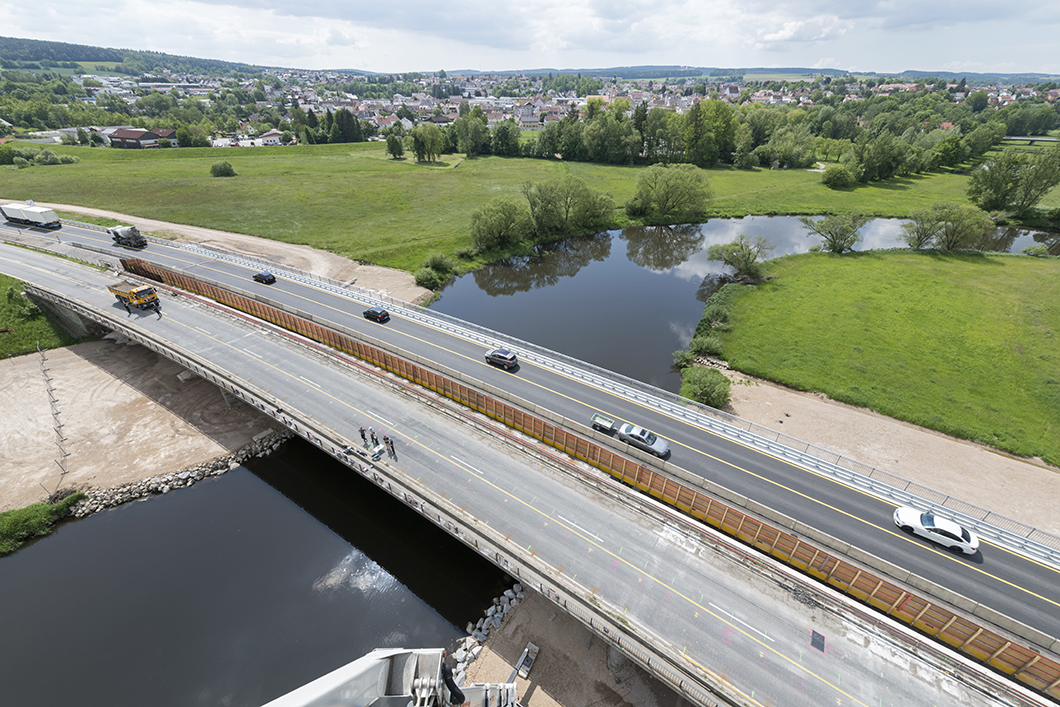
Road bridge in Roding, Bavaria: The load capacity of such structures can be determined with ultrasound.
Source: BAM
The load-bearing capacity of existing bridges has so far been analysed with static calculations based on old plans. In order to avoid closures or premature reconstruction works, the Bundesanstalt für Materialforschung und -prüfung (BAM) is relying on the results of state-of-the-art testing methods, which could be incorporated into the structural analyses in the future.
In Germany, recurring inspections are performed to ensure the safety of bridges. In addition, static calculations are used to assess whether a structure can continue to withstand the predicted traffic loads. If it turns out that it has deficiencies, protective measures are initiated - for example, a closure for heavy vehicles, structural strengthening or even a demolition and subsequent new construction.
In case of doubt, to ensure safety to the users, authorities tend to decide in favour of a partial or complete closure or a renewal to avoid any hazards. "In many cases, the calculations are not based on on-site measurement data describing the condition of the structure, but on documents created during construction and also on assumptions if drawings are missing or incomplete," says Stefan Küttenbaum, expert for structural inspections at BAM. "Modern non-destructive testing methods actually facilitate much more detailed assessments of bridges. So far, however, these methods have not been considered in the national reassessment guidelines. Therefore, their great potential for identifying structural reserves in static calculations and thus for avoiding, for example, unnecessary use restrictions or premature renewals cannot be unlocked."
Stefan Küttenbaum coordinates the research project "ZfPStatik" at BAM. It has set itself the goal of integrating the most modern methods of structural testing into the calculations: "By supplementing the rules and regulations, we want to ensure that our built environment is treated in a sustainable and demand-actuated manner, while maintaining the proven high level of structural safety in Germany. In this way, the availability of transport infrastructure to the public will be increased - and we use our resources more responsibly."
In the project, BAM will analyse the capabilities and limitations of various non-destructive testing methods. The quality of the test results will be evaluated for common bridge types and additionally on dismantled reference structures. Finally, stakeholders are provided with procedures and processes which allow for economical and reliable non-destructive testing on site.
The "ZfPStatik" project with a total volume of 1.1 million euros is funded by the Federal Ministry for Economic Affairs and Climate Action. In addition to BAM, the Bundeswehr University Munich, the HTW Berlin (University of Applied Sciences), several established engineering offices and the German Committee for Reinforced Concrete (DAfStb) are part of the consortium.


